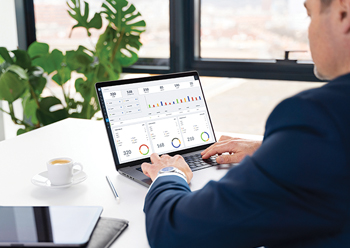
Implementing technology has had an enormous impact on the construction industry over the past decade. One of the technological solutions that has revolutionised the sector is building information modelling (BIM), which has opened larger opportunities for improving collaboration and communication between all stakeholders of the construction projects.
The global BIM market was valued at $6.5 billion in 2021, and is projected to exhibit a compound annual growth rate (CAGR) of 15.63 per cent by 2027. In the Middle East, the adoption of BIM has increased over the past few years, with Dubai Municipality being the first public authority in the region to mandate the use of BIM for most large-scale projects in the emirate.
This indicates the increasing awareness of the benefits it offers, namely easier cost estimation; improved communication and collaboration on-site; defect management; streamlined operations; and safety and sustainability.
 |
|
Imam ... a single point of truth. |
Easier cost estimation
Cost estimation consumes a lot of time. But since even costs of the small components can be captured in detail in BIM models during the planning phase, designers and contractors get a detailed understanding of the expected costs, which significantly simplifies estimation.
This detailed attribution of costs also makes it easy to compare different design variants since, based on the underlying data, the costs are calculated automatically for smaller or larger material input.
Improved collaboration
By acting as a single point of truth, the BIM model improves collaboration between stakeholders. By providing the model in a centralised platform, all teams have real-time access to data and always work with the latest design version, avoiding siloed information.
Using field management solutions like PlanRadar, project participants can enrich and extend the model with additional information on defects and open tasks even during the construction phase.
Defect management
In any construction project, defects are a common problem that often leads to schedule and cost overruns. By using BIM models in the defect management process, both locating and resolving defects can be made faster and more transparent.
By locating defects in three-dimensional digital twins, inspectors can provide the teams involved with precise information about the location of the defect. Furthermore, the additional information provided in the model helps to better assess the severity of the defect and its impact on other areas of the building.
Streamlined operations
Integrating BIM with facilities management (FM) software helps to improve the daily operations and maintenance efficiency of the building throughout its lifecycle. The FM team can plan and automate maintenance, repair, and replacement activities and create and assign tasks to the maintenance team directly in the digital twin.
In addition, BIM provides important insights into the performance of different systems in a building and allows to simulate the impact of adjustments, repairs and improvements, which can make it an important tool for decision-makers.
Safety & sustainability
BIM can be used to create, test, and optimise designs before the building phase to provide optimised, energy-efficient design by analysing energy consumption data and minimising waste of building materials by calculating the required amount, which helps to reduce the carbon footprint and construction impact on the environment.
With advancement of technology and innovation, we will see greater developments in BIM and cloud-based technologies utilisation in the construction industry. This will improve collaboration and co-ordination to deliver high-quality projects more efficiently.
* PlanRadar, now setting up its regional headquarters in Dubai, is a platform- and device-independent cloud-based SaaS field management solution for documentation and communication in construction and real estate projects.





















_0001.jpg)


.jpg)
















.jpg)








.jpg)


